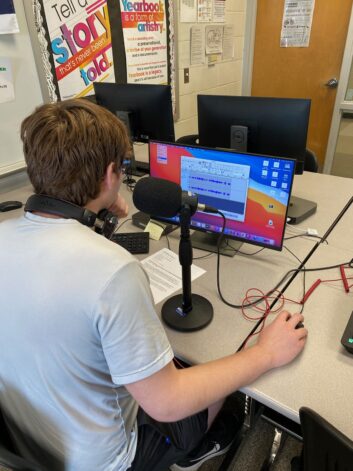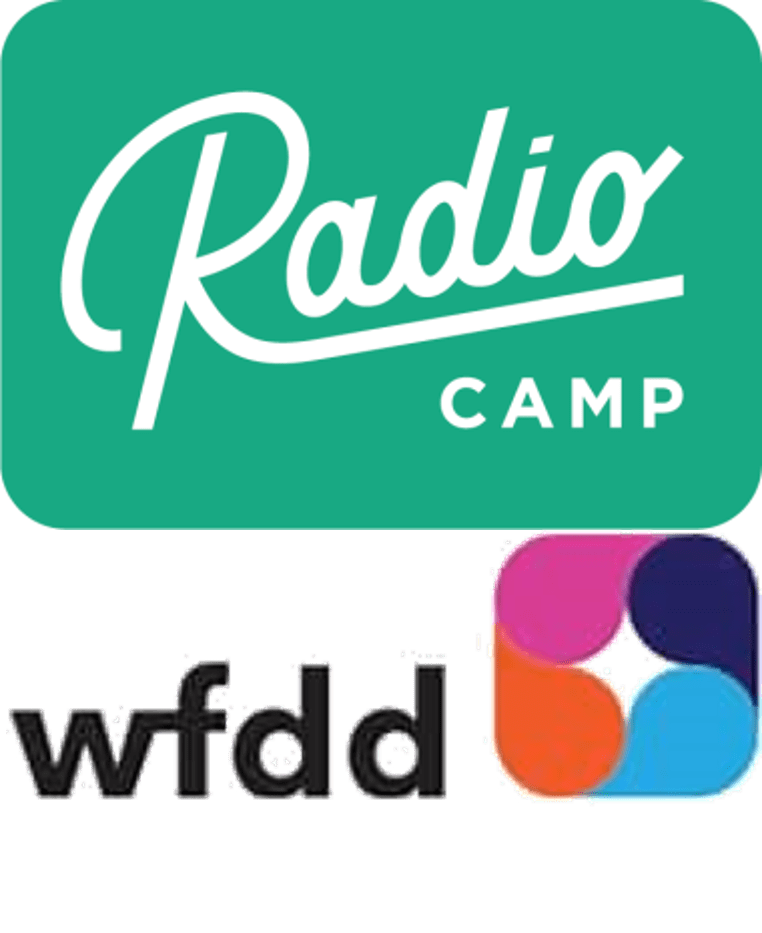
A remarkable thing is happening in many corners of the radio industry here in the States. Broadcast organizations are realizing the value of youth in the sustainability of the medium.
It’s a topic we’ve talked about for some time. And it dates all the way back to the beginnings of the Midwest Conclave (as it was called) well more than four decades ago. There are ongoing discussions about what might be next for this iconic event, famous for helping young broadcasters receive training and scholarships.
Hopefully, the Conclave will yet return in perhaps a new form, but hopefully retaining its mission of working with students and fledging broadcasters who have an interest in working with radio.
In its wake, new and reinvented initiatives have sprouted up, pre- and post-COVID. And I’ll talk about some of them in today’s post. Two things you can do:
- See if any of these programs might work for your company or organization. You might want to partner or collaborate with some of these existing programs or use them as a jumping off point for an initiative you might wish to undertake.
- Tell me about any programs going on in your building or your company we should know about. They can live in the “comments,” and perhaps become another post later in the year.
I’ve written extensively about Dan Vallie‘s visionary National Radio Talent Institutes, held at key locations in the U.S. and supported by broadcasters like Beasley and Hubbard. The first time was highlighted in our Radio’s Most Innovative series back in 2015.
The RAB has now taken Dan’s creation over, led by Bob Lawrence. I’ve been involved

in a number of these over the years, and I’m pleased to tell you I’ll be participating in their Illinois event in 2024. Erica Farber and her team have consistently advocated for students with their eye on a radio broadcasting career.
And now, we’re seeing additional signs of activity designed to entice students to look into radio as their avocation. In fact, some are going back to high schools where many formative career choices take place. I’ve talked to some broadcasters who believe that while college programs can be valuable, starting at the high school level may produce better results.

Recently, Radio World ran a story on the topic, “New Program Nourishes High School Interest in Radio,” written by industry vet and advocate Donna Halper. She tells the story of how two state broadcasters associations – Nebraska and Massachusetts – are collaborating to launch the High School Radio Project.
The program began in Omaha by the Nebraska Broadcaster Association’s executive director, Jim Timm. The idea was to hook up with area high schools to launch radio stations using gear lent by the state association. When a project was completed, the equipment would be shipped to the next high school in the queue.
When Massachusetts Broadcasters Association leader, Jordan Walton, found out about the program, he connected with Timm to create the partnership. The two state associations are up and running, reporting strong interest in this program.
A different and ambitious program is taking place in my home state. I recently wrote about the Michigan Association of Broadcaster’s campaign, “Be There.” It is now making its way throughout the upper and lower peninsulas, racking up rave reviews.
MAB president and CEO, Sam Klemet, got the program going. Now other state broadcaster associations are considering using the campaign. Unlike the Nebraska and Massachusetts effort, “Be There” is a branding approach designed to stimulate interest in broadcasting using spot inventory from MAB television and radio members all over the state.
In addition, Sam’s team has built a dedicated website for the campaign – BeThereMichigan.com – with tools broadcasters can use to support youth efforts.

But the MAB is doing more than marketing to students. Last year, the organization debuted an event at Ford Field in downtown Detroit, a major destination here in Michigan, home field of the Detroit Lions.
It’s called the Great Lakes Broadcast and Sports Media Academy, described as “an opportunity for young people pursuing careers in the broadcast media to learn from those in the industry during panel conversations and sessions, network with radio and television stations at a career fair, and practice their broadcast skills with hands-on activities during the Student Talent Showcase.”
That includes providing young attendees with teleprompters, green screens, and the chance to do some play-by-play. They’ll have the chance to receive free head shots and interview Michigan broadcast celebrities.
At last year’s debut event, hundreds of young people showed up to learn, network, and gain exposure to local media outlets and talent. For next week’s second annual academy more than 900 young people are registered, representing more than 50 schools across the state. Over 100 broadcast stations and college media programs will be on hand.
Opening remarks will be delivered by Michigan Lieutenant Governor Garlin Gilchrist, along with former Tiger and broadcaster Craig Monroe.
Paul and I will be in attendance, taking it all in. Photos and updates to come.
 Not to be outdone, public radio is in the game as well. WFDD in Winston-Salem, North Carolina, has its signature program, Radio Camp, taking place weekend mornings. It’s designed to help young people gain skills in radio production, including writing, interviewing, recording. In other words, news and storytelling in a real-world setting.
Not to be outdone, public radio is in the game as well. WFDD in Winston-Salem, North Carolina, has its signature program, Radio Camp, taking place weekend mornings. It’s designed to help young people gain skills in radio production, including writing, interviewing, recording. In other words, news and storytelling in a real-world setting.
Originally, Radio Camp was designed as an activity for middle school kids during the summer, but it’s been expanded for the entire community.
Kudos to WFDD’s Molly Davis and Tom Dollenmayer, the passionate management duo, for getting this program going, and connecting with their community through the voices of youth.
It makes you wonder why more NPR news stations aren’t more actively trying to train the next generation of reporters, anchors, and correspondents.
It’s yet another example of what radio can do to introduce its magic to young people all over this country. And I’m sure there’s more, hopefully, at some of the bigger companies in the industry.
Fanning the flames of career interest is one thing. Creating an environment where young people can learn, excel, and grow into management positions is the next rung of radio’s transformation.
It means paying competitive wages, a positive work environment, and the chance to succeed.
But it starts with bringing middle, high, and college students into the radio community. Kudos to those already making a difference.
Contact info:
Bob Lawrence, National Radio Talent Institute – here
Jim Timm, Nebraska Broadcasters Association – here
Jordan Walton, Massachusetts Broadcasters Association – here
Sam Klemet, Michigan Association of Broadcasters – here
Molly Davis, WFDD – here
- Media And Technology In 2025: Believe It Or Not! - April 18, 2025
- In Radio, You Just Never Know - April 17, 2025
- The Secret To Making A Great Podcast (And Great Radio) - April 16, 2025




Radio is an essential life skill extra circular activity. In high school it was only a Public Address activity. Building 3kw stereo WWUH-FM at the University of Hartford, West Hartford CT (on air 7.15.68) has created a 55 year service to the Greater Hartford area. Academic institutions and Public Broadcasting must embrace student participation and lend support rather than dismissing the facilities or allowing non-student volunteers to be charged with their maintenance. Too many are forgetting the roots and future delivered by enthusiastic students who go on to make the difference. Certain broadcast courses should become requirements.
Great article Fred! This summer will be the 5th for my CAMP BROADCAST program in Chicago. The high school & college students get hands-on experience by interviewing celebrities every day at camp to create a hosting reel & aircheck. Many of our alumni are now working full-time in the industry.
See photos, testimonials, and a list of all the previous celebrity guests (and industry guest instructors) at https://campbroadcast.com/
Here’s a sizzle reel, as featured on THE TODAY SHOW & GOOD MORNING AMERICA; https://www.youtube.com/watch?v=2nhJ35Pax_I
I commented recently about my Madison trip and my questioning of students on what it will take to get Gen Z to listen more to radio. The University of Wisconsin’s WSUM – FM was aggressive at the beginning of the semester in recruiting new students and along the lines of your post, they were highly successful. Interesting that while these same students probably weren’t listening to much radio if any, they still wanted to jump in.
The level of enthusiasm for radio once kids get in that studio is often off the charts. There’s nothing wrong with radio as a amedium – it’s the way it has “devolved” these past three decades or so that many consumers push back against – or just ignore.